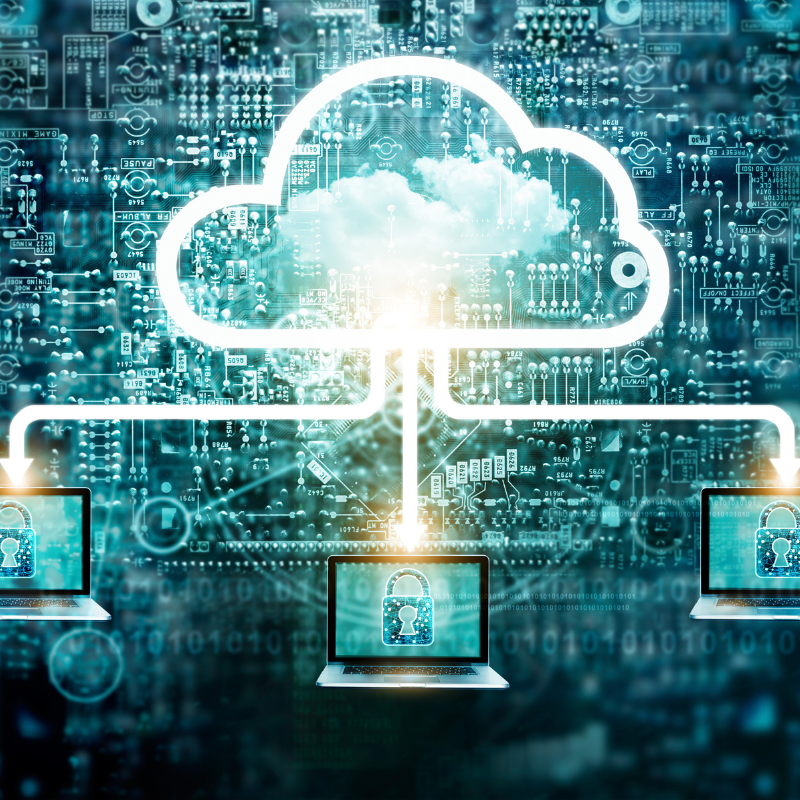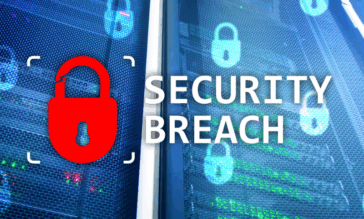Cloud Security in Two Parts: Masking and Sanitization

Cloud adoption continues to accelerate across every industry. The cloud has become a cornerstone of modern business, from streamlining operations to enabling remote work. Its scalability, flexibility, and cost-efficiency make it an easy choice for organizations looking to move fast and stay competitive.
But with that convenience comes risk.
The attack surface expands as more services, users, and data shift to cloud environments. Threat actors increasingly turn their attention to these platforms, looking for gaps to exploit. That’s why cloud security demands more than one layer of protection. Let’s dive deeper.
Cloud Jacking: A Growing Threat
As organizations embrace the cloud, attackers have shifted focus to the platforms, accounts, and services that now power day-to-day operations. Among the most alarming developments in this space is the rise of cloud jacking, a tactic in which cybercriminals hijack legitimate cloud accounts to gain unauthorized access to sensitive systems and data.
Cloud jacking isn’t theoretical. A recent report shows how impactful cloud attacks can be, with over 80% of data breaches involving data stored in the cloud. High-profile breaches such as Snowflake, tied to compromised cloud environments, show how rapidly attacks can explode out of control. Attackers can escalate privileges, move laterally across services, and extract valuable data while staying under the radar until the breach is too large to miss.
There are several ways cloud jacking typically occurs:
- Compromised credentials remain a leading cause, whether through credential stuffing, brute-force attacks, or information stolen in unrelated breaches.
- Misconfigured permissions are another major weakness, especially in complex environments where access controls aren’t regularly reviewed or standardized.
- And increasingly, phishing and malware targeting browser-based access to cloud platforms serve as the initial entry point, exploiting the fact that users often operate directly in the cloud through unmanaged or personal devices.
The damage from a successful cloud jacking attack can be extensive. Beyond data theft, attackers may use access to deploy ransomware, exfiltrate intellectual property, or leverage cloud resources for further attacks. Worse, the trust placed in cloud systems often means that these intrusions go unnoticed until it’s too late, resulting in regulatory penalties, customer churn, and long-lasting reputational harm.
Why Traditional Defenses Aren’t Enough
Despite significant investments in cybersecurity, many organizations remain vulnerable in the cloud because traditional defenses are not designed for how people work today. Most legacy security models were built around protecting networks and endpoints, assuming that users and data would stay within a defined perimeter. In a cloud-first world, that assumption no longer holds.
Cloud platforms operate outside the boundaries of the corporate network, making it difficult for conventional tools to monitor activity or enforce policies effectively. As a result, without a myriad of solutions in place, browser-based workflows and cloud applications that power modern productivity often go unprotected, even as they handle sensitive data and files daily.
Signature-based detection tools rely on known threat patterns and struggle to identify sophisticated or novel attacks. Sandboxing can offer a second line of defense, but it is not foolproof and often introduces delays that disrupt business operations. Worse, these solutions are inherently reactive. They alert teams after something suspicious happens rather than preventing the threat from reaching users in the first place.
Layer One: Active Data Masking
As organizations share more data across cloud platforms, ensuring that sensitive information is only visible to those who need it becomes a core security requirement. This is where real-time data masking plays a critical role. Rather than exposing raw data to every user or system that accesses it, data masking dynamically redacts or obfuscates sensitive fields based on the user’s role, device, location, or access context.
In practice, this means that personally identifiable information (PII), payment data (PCI), or protected health information (PHI) can be masked or hidden from view when the context does not justify full access. For example, a contractor accessing a customer database might see masked names and contact details, while a full-time support agent sees the unmasked view. Similarly, a third-party integration pulling data from a cloud-based CRM could be limited to anonymized fields, preventing unnecessary exposure.
This approach significantly reduces the risk of overexposure, especially in hybrid or distributed environments where access needs vary widely. It also reinforces Zero Trust principles, assuming no user or system should automatically be trusted with full data access.
Beyond risk reduction, real-time data masking helps organizations meet privacy requirements under data protection regulations like GDPR or HIPAA. It ensures sensitive data remains protected, even when accessed in legitimate workflows, creating a strong foundation for security and compliance in the cloud.
Layer Two: File Sanitization with Advanced CDR
While data masking protects sensitive information from being overexposed, it does not address a different but equally critical risk: malicious files entering the cloud environment. Employees open email attachments daily, download shared documents, and interact with files stored in platforms like Google Drive, Dropbox, and OneDrive. These files often arrive from external sources and may carry embedded threats that are difficult to detect with traditional tools.
Content Disarm and Reconstruction (CDR) provides a proactive solution to this problem. Rather than scanning files for known malware signatures or relying on behavioral analysis, CDR works by assuming that every file is dangerous. It deconstructs each file down to its essential elements, strips out any potentially malicious code or hidden payloads, and then rebuilds a clean version of the original file, free from threats. Advanced CDR tools will do this and maintain full file functionality, including essential macros to ensure business flow continues uninterrupted—no longer delivering flat PDFs to end-users.
CDR allows users to interact with their files as intended without compromising security. Attachments can be opened, and shared documents can be viewed or downloaded, all without the risk of hidden malware slipping through. Because CDR does not depend on threat intelligence feeds or sandboxing environments, it eliminates the delays and blind spots associated with traditional detection-based methods.
Why Both Layers Are Necessary
Data masking and file sanitization each serve a distinct purpose in protecting cloud environments, but their combined use creates a truly resilient defense.
Data masking is capable of protecting data at rest and in motion, ensuring that sensitive fields remain hidden from unauthorized users or systems. It reduces unnecessary exposure, limits the blast radius of potential breaches, and supports strict access control without disrupting legitimate workflows.
Simultaneously, proactive file sanitization addresses files in motion that enter the environment from external sources. Whether delivered via email or shared through cloud platforms, these files can contain embedded threats that bypass traditional detection. CDR cleans these files before they reach the user, neutralizing hidden risks without interrupting workflow.
Relying on one layer without the other creates a gap. Masking without sanitization leaves users vulnerable to file-based attacks. Sanitization without masking leaves sensitive data unnecessarily exposed. By implementing both, organizations can cover the full spectrum of cloud risk, from data leakage to malware delivery.
Together, these layers offer a proactive and preventive approach to cloud security that matches the speed, scale, and flexibility of how people work in the cloud.
Elevating your Defenses with Votiro DDR
Cloud jacking is not a passing trend—it’s a growing threat that demands smarter, more adaptive defenses. As attackers continue to evolve, security strategies must evolve with them. In response to these growing threats, the Votiro Zero Trust Data Detection and Response (DDR) platform is two solutions in one: advanced CDR and active data masking.
Together, Votiro’s real-time data masking and file sanitization form the new baseline for secure cloud operations. Our two-layer approach closes critical gaps, prevents breaches before they start, and aligns security with how people work in the cloud. Request a demo today to learn how Votiro DDR can secure your data and files in the cloud.
News you can use
Stay up-to-date on the latest industry news and get all the insights you need to navigate the cybersecurity world like a pro. It's as easy as using that form to the right. No catch. Just click, fill, subscribe, and sit back as the information comes to you.
Sign-up Here!
Subscribe to our newsletter for real-time insights about the cybersecurity industry.



